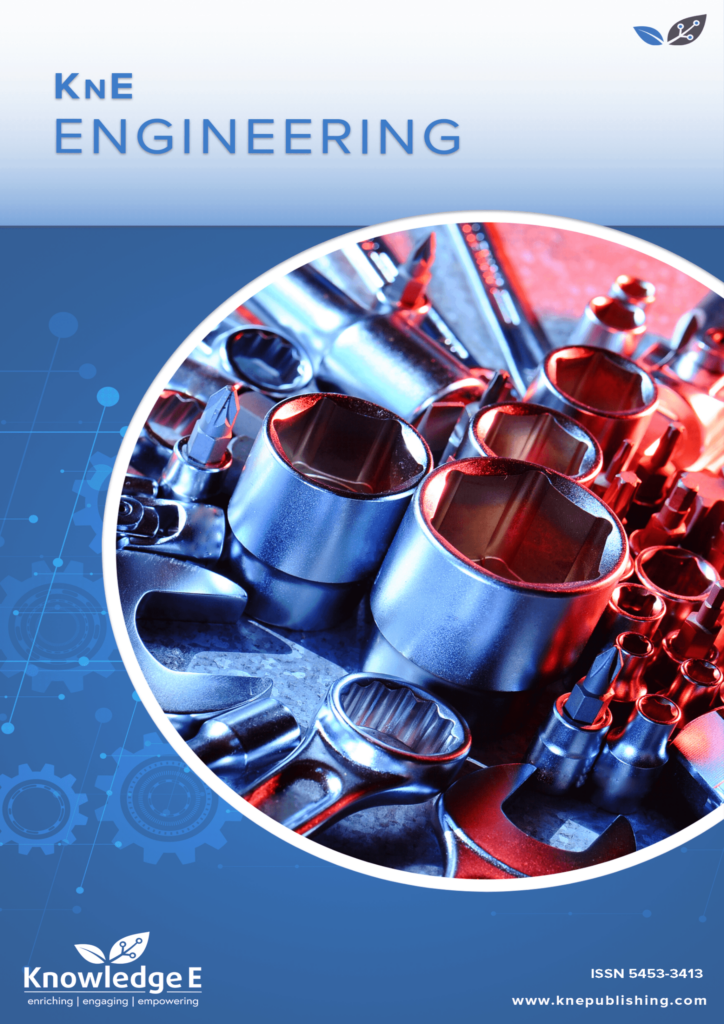
KnE Engineering
ISSN: 2518-6841
The latest conference proceedings on all fields of engineering.
Finding Chemical Pathways Toward the Valorization of Automobile-Service-Station Wastes
Published date: Feb 11 2018
Journal Title: KnE Engineering
Issue title: 6th Engineering, Science and Technology Conference - Panama 2017 (ESTEC 2017)
Pages: 636-644
Authors:
Abstract:
Automobile-service-station wastes make for an acute environmental concern because they contain polyaromatic hydrocarbons, heavy metals, surfactants, and other harmful elements. An eco-friendly way to treat and take advantage of these wastes is embodied in the concept called "valorization". In the present work, valorization is described as a chemical process to remove solids from contaminated water and to stabilize oily sludge into a saponified product. Electrocoagulation and coagulation with aluminum were applied to separate oil-water emulsions and removed 99.7% of turbidity. Both coagulation processes obtained approximately 0.85 kg of treated water and 0.027 kg of dried oily sludge per kg of wastewater. A saponification process with dosages of 10% NaOH stabilized the dried oily sludge. In hopes of finding pathways to valorize wastes, chemical treatments with aluminum and NaOH obtained a product that can be used as a surfactant or as an energy source.
Keywords: sludge, electrocoagulation, saponification, oil, wastewater
References:
[1] Adhoum, N., Monser, L., Bellakhal, N., & Belgaied, J. (2004). Treatment of electroplating wastewater containing Cu2+, Zn2+ and Cr(VI) by electrocoagulation. Journal of Hazardous Materials, 112(3), 207–213. https://doi.org/10.1016/j.jhazmat.2004.04.018
[2] Annunciado, T. R., Sydenstricker, T. H. D., & Amico, S. C. (2005). Experimental investigation of various vegetable fibers as sorbent materials for oil spills. Marine Pollution Bulletin, 50(11), 1340–1346. https://doi.org/10.1016/j.marpolbul.2005.04.043
[3] Banchon, C., Castillo, A., & Posligua, P. (2017). Chemical interactions to cleanup highly polluted automobile service station wastewater by bio-adsorption coagulation-flocculation. Journal of Ecological Engineering, 18(1), 1–10. https://doi.org/10.12911/22998993/66252
[4] Cañizares, P., Jiménez, C., Martínez, F., Sáez, C., & Rodrigo, M. A. (2007). Study of the Electrocoagulation Process Using Aluminum and Iron Electrodes. Industrial & Engineering Chemistry Research, 46(19), 6189–6195. https://doi.org/10.1021/ie070059f
[5] Chawaloesphosiya, N., Mongkolnauwarat, J., Prommajun, C., Wongwailikhit, K., & Painmanakul, P. (2015). Treatment of cutting-oily wastewater by electrocoagulation-flotation (ECF) process: Modeling approach. Environmental Engineering Research, 20(4), 392–396. https://doi.org/10.4491/eer.2015.085
[6] Hanafy, M., & Nabih, H. I. (2007). Treatment of Oily Wastewater Using Dissolved Air Flotation Technique. Energy Sources, Part A: Recovery, Utilization, and Environmental Effects, 29(2), 143–159.
[7] IEA. (2017). World oil demand (International Energy Agency - Oil market report 2017 - Web service). Retrieved from https://www.iea.org/oilmarketreport/omrpublic/
[8] Kabdaşlı, I., Arslan-Alaton, I., Ölmez-Hancı, T., & Tünay, O. (2012). Electrocoagulation applications for industrial wastewaters: a critical review. Environmental Technology Reviews, 1(1), 2–45.
[9] Madanhire, I., & Mbohwa, C. (2016). Lubricant Additive Impacts on Human Health and the Environment. In I. Madanhire & C. Mbohwa, Mitigating Environmental Impact of Petroleum Lubricants (pp. 17–34). Cham: Springer International Publishing. https://doi.org/10.1007/978-3-319-31358-0_2
[10] Mang, T. (Ed.). (2007). Lubricants and lubrication (2., completely rev. and extended ed). Weinheim: Wiley-VCH.
[11] Mouedhen, G., Feki, M., Wery, M. D. P., & Ayedi, H. F. (2008). Behavior of aluminum electrodes in electrocoagulation process. Journal of Hazardous Materials, 150(1), 124–135.
[12] Peng, G., & Tian, G. (2010). Using electrode electrolytes to enhance electrokinetic removal of heavy metals from electroplating sludge. Chemical Engineering Journal, 165(2), 388–394.
[13] Sabir, S. (2015). Approach of Cost-Effective Adsorbents for Oil Removal from Oily Water. Critical Reviews in Environmental Science and Technology, 45(17), 1916–1945.
[14] Vanhanen, J., Rinkiö, M., Aumanen, J., Korppi-Tommola, J., Kolehmainen, E., Kerkkänen, T., & Törmä, P. (2004). Characterization of used mineral oil condition by spectroscopic techniques. Applied Optics, 43(24), 4718–4722.
[15] Yeber, M., Paul, E., & Soto, C. (2012). Chemical and biological treatments to clean oily wastewater: optimization of the photocatalytic process using experimental design. Desalination and Water Treatment, 47(1–3), 295–299. https://doi.org/10.1080/19443994.2012.696413
[16] Yu, L., Han, M., & He, F. (2013). A review of treating oily wastewater. Arabian Journal of Chemistry. https://doi.org/10.1016/j.arabjc.2013.07.020
